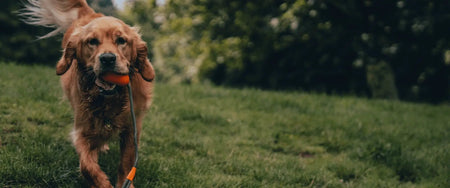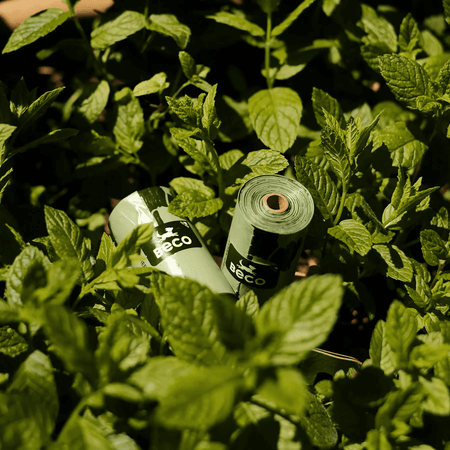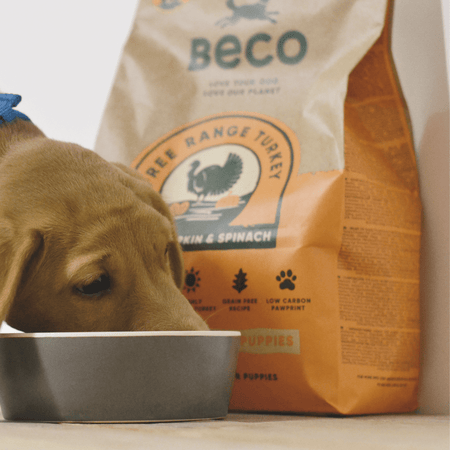Just how much exercise a puppy needs depends on several variables, including the breed (and therefore the puppy’s size) as well as the age of the puppy; younger puppies require less daily exercise than more mature puppies, for instance.
In this article, we’ll comprehensively break down how much exercise your puppy needs, as well as the best forms of exercise – whether that be a walk in the local dog park, or simply a short play in the back garden.
There's No “One Size Fits All” Model
Now, we cannot stress this enough. No two puppies are the same, and as such, every puppy will require different quantities of exercise. In fact, even two puppies of the same breed (and of the same age) can have wildly different exercise requirements, based on their natural physical stature, gender and more.
The point being that the amount of exercise needed by your puppy is individual to them, and should be tailored specifically to them, not to some cookie-cutter guide you find in the pet store or online. With that in mind, then, what are the different factors affecting the amount of exercise needed by a puppy?

Breed
First, let’s look at the difference breed makes when it comes to the amount of exercise your puppy needs. Certain breeds are naturally more active and energetic, a by-product of their origins. Collies, for instance, have historically been used as sheepdogs, meaning that they spend virtually all day, every day, being highly active.
A toy breed, by comparison – a Pomeranian, let’s say – won’t have anywhere near the same activity requirements, and will tire more easily. This reasoning stands whether the breed is a puppy or fully matured.
NOTE: It’s important to note, though, that puppies of even the most active breeds will still have a lower tolerance for play and activity than their fully-matured counterparts.
Breed Size
It isn’t just the type of breed that matters, however, the size of the breed also plays a big role in determining your puppy’s daily exercise requirements. Generally speaking, bigger dog breeds (such as Great Danes and Irish Wolfhounds, for instance) require less exercise than small-to-medium-sized breeds.
What’s more, these bigger breeds are also more prone to joint problems like arthritis, so you need to be doubly careful about gradually introducing these bigger breed puppies to exercise, so that you don’t exacerbate the risk of any such issues developing later in life.
Exercise Type
In reality, ‘exercise’ is a broad umbrella term for various different types of physical activity; this can range from playing with toys, through to running around off the lead after a tennis ball, through to a gentle stroll around the local woods. Some breeds of puppy will require exercise that not only stimulates them physically, but does so mentally, too.
For naturally intelligent breeds like German Shepherds, for instance, you might want to consider a more interactive form of exercise, utilising puzzle toys like treat balls, different kinds of chews and games like fetch, rather than just a simple walk. This will help not only tire them out appropriately, but develop their mental capacity as well.
How Much Exercise Does a Puppy Need a Day?
With all those above factors in mind, there’s a rule of thumb which you can apply to help figure out how much exercise your puppy will require a day. Take your puppy’s age in months, and give them five minutes of exercise per that figure, then do that twice per day; a six-month old puppy, therefore, would require two thirty-minute stints of exercise.

Now, this is where common sense and logic comes into play. If your puppy is a Collie (to use our previous example) then you may well want to bump that figure up slightly. It’s important, however, that you don’t overwork your puppy from too young an age, as this can impair their physical development. In short, just keep an eye on your little canine companion. If they’re still bouncing off the ceiling after you’ve exercised them, then they could well do with having a bit more exercise.
How Do I Know if I'm Over Exercising My Puppy?
People think puppies are like dynamos when it comes to their endless energy. But can you over exercise a puppy? Yes, absolutely! If your pup seems to be at all struggling with the amount of exercise they’re getting, or seem permanently tired, then it might be worth just scaling things back a little bit.
Signs You’re Over Exercising Your Puppy
-
Excessive panting
-
Slowed pace
-
Struggling to keep up with you
-
Confusion/nausea
-
General fatigue
How to Safely Introduce Your Puppy to Exercise
Puppies love to play, and playtime is the easiest (and safest) way to introduce your pup to exercise for the first time. If you have a turfed garden, then this is the ideal place to first allow your puppy to play and exercise, as the softness underfoot will be much easier on their paw pads than a paved or concrete surface.
Start in a Quiet Area
To begin with, if you’re able to exercise your puppy in a quieter area, then that’s always preferable, too. What we mean by this is away from main roads if at all possible, and perhaps where fewer other dogs are likely to be being walked. Socialisation is undoubtedly a hugely important thing for young dogs. However, you want to reinforce a positive association in your puppy’s mind when it comes to going for walks, and it only takes one negative experience with another dog early on to potentially jeopardise that association.
Introduce Other Dogs
As soon as you feel your puppy is getting more comfortable and familiar with going for daily walks, then you can start to introduce other dogs, whether that be going on walks with other doggy friends, or simply to the dog park where you’re more likely to bump into others. That way, you ensure your pup doesn’t miss out on that crucial socialisation stage.
Final Thoughts
When you’ve welcomed a puppy in your home, you want to make sure you’re ready; whether that be having the right food, ensuring that you’ve got enough (indestructible) toys at the ready, or just having an ample supply of dog poop bags.
And as for the question – how much exercise should a puppy get? Just follow our guiding principles above, and you’ll quickly learn to judge how much exercise is right for your own particular dog. As always, though, if you’re ever in doubt about what you need for your puppy, then get in touch with your vet or local pet store for some more advice.













